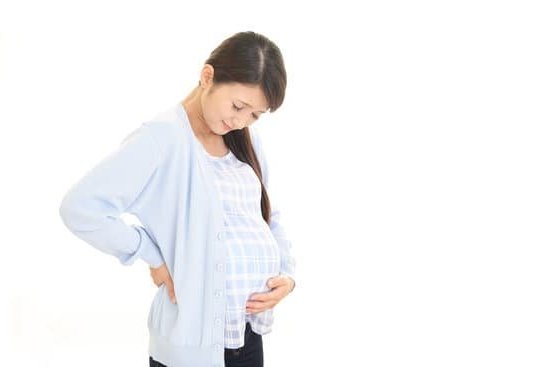Quickening in pregnancy refers to the first fetal movements or kicks felt by the expectant mother. This milestone is an exciting and pivotal moment for pregnant women as it signifies the beginning of a physical connection with their developing baby. Understanding what quickening is, its historical significance, and its impact on both mother and baby is crucial for every expectant parent.
The experience of quickening has been documented throughout history, dating back to ancient times when it was believed to have mystical or spiritual significance. Today, modern science has shed light on the biological processes behind quickening and its importance for monitoring the health and development of the fetus.
In this article, we will delve into the historical perspective of quickening, explore the scientific explanation behind it, dispel common misconceptions about this phenomenon, and discuss its signs and symptoms. We will also provide valuable insights into how quickening can affect both the mother and her unborn child, as well as offer guidance on when to seek medical advice regarding these movements.
Additionally, we will share tips for easing any discomfort associated with quickening during pregnancy. Whether you are a first-time mother or have experienced pregnancy before, understanding quickening is essential for navigating this incredible journey.
Historical Perspective on Quickening
Early Beliefs and Practices
In ancient times, quickening was often surrounded by mysticism and superstition. Many cultures believed that the quickening of a fetus marked the point at which the soul entered the body, hence why it was such an important milestone in pregnancy. Some even believed that quickening could predict the future or indicate the gender of the baby. As a result, it was often shrouded in ritual and ceremony.
Legal and Moral Significance
During the Middle Ages, quickening held significant legal and moral implications. In many societies, laws regarding abortion were based on whether or not the fetus had quickened. In fact, quickening was considered to be evidence of pregnancy in court cases, as it was seen as proof that a woman was carrying a living being.
Evolution of Understanding
As medical knowledge advanced, so did our understanding of quickening. During the Renaissance, there was a shift towards a more scientific understanding of pregnancy and fetal development. It was during this time that physicians began to study and document the phenomenon of quickening more systematically, leading to fewer superstitions surrounding it. Today, while quickening is no longer associated with mysticism or used as legal evidence, its historical significance still offers insight into how perception of pregnancy has evolved over time.
Throughout history, the concept of quickening has played a significant role in shaping beliefs about pregnancy, childbirth, and fetal development. Understanding its historical perspective allows us to appreciate just how far we have come in our understanding of this miraculous process.
The Science Behind Quickening
Quickening in pregnancy is a significant milestone that many women look forward to experiencing. It refers to the first movements of the baby in the womb, which can be an exciting and reassuring moment for expectant mothers. But what exactly is quickening and what is the science behind it?
The science behind quickening lies in the development of the fetus. Around 16-25 weeks into pregnancy, the baby’s musculoskeletal system begins to mature, allowing them to make small movements. These movements are often described as flutters or bubbles by women who are experiencing quickening for the first time. As the baby grows, these movements become more pronounced and noticeable.
Here are some key scientific facts about quickening:
- Quickening typically occurs between 16 and 25 weeks of pregnancy
- It is more commonly felt by women who have been pregnant before
- The position of the placenta can affect when quickening is felt
As a natural part of pregnancy, quickening serves as a reminder of the life growing inside a woman’s body, providing emotional connection and reassurance during this delicate time. Understanding the physiology behind quickening can help expectant mothers appreciate this incredible phenomenon even more.
Common Misconceptions About Quickening
Quickening as Gas or Digestive Issues
One of the most common misconceptions about quickening in pregnancy is that it can be confused with gas or digestive issues. Some women may mistake the movements of their baby for stomach rumblings or gas bubbles, especially during the early stages of pregnancy when quickening is first felt. It’s important for expectant mothers to educate themselves on what to expect when feeling their baby move, so they can differentiate between normal fetal movement and gastrointestinal discomfort.
Quickening as Indigestion or Stomach Upset
Another misconception is that quickening may be perceived as indigestion or stomach upset. As the baby grows and becomes more active, especially during the third trimester, the movements can sometimes feel like a case of indigestion or a stomach ache. This misunderstanding can lead to overlooking important signs of fetal well-being and development.
Quickening as an Indicator of Baby’s Gender
Some cultures and old wives’ tales suggest that the timing and intensity of quickening can indicate the gender of the baby. However, there is no scientific evidence to support this claim. The sensation of quickening is unique to each pregnancy and depends on various factors such as the position of the placenta, the mother’s body shape, and the activity level of the baby.
Despite these misconceptions, understanding what quickening truly means in a pregnancy can help expectant mothers to appreciate and connect with this special phase in their journey to motherhood.
As an expectant mother experiences these fluttering sensations, recognizing them for what they truly are can deepen her bond with her baby and provide reassurance about her baby’s health and well-being during pregnancy.
Signs and Symptoms of Quickening
One of the most exciting moments in a woman’s pregnancy is feeling the baby move for the first time. This is known as quickening, which is the term used to describe the first movements of the fetus in the womb. Quickening typically occurs between 16 and 25 weeks of pregnancy, with first-time mothers experiencing it closer to 25 weeks, while those who have been pregnant before may feel it as early as 13 weeks.
The sensation of quickening can vary from person to person, and even from pregnancy to pregnancy. For some women, it feels like butterflies fluttering in their stomach or gas bubbles moving around. Others describe it as a gentle tapping or poking sensation. As the baby grows, these movements will become more distinct and powerful, often visible from the outside when the mother’s abdomen moves with each kick or punch.
At first, quickening may be sporadic and unpredictable. However, as the fetus grows larger and stronger, the mother will begin to notice a pattern in their movements. It is important to keep track of these patterns and report any significant changes to a healthcare provider. This can include a decrease in movement or inconsistency in patterns that could indicate potential issues with the baby’s health.
| Signs | Symptoms |
|---|---|
| Butterflies fluttering | Gentle tapping |
| Poking sensation | Powerful kicks or punches |
Impact of Quickening on the Mother and Baby
The quickening in pregnancy refers to the first movements of the fetus in the womb that can be felt by the mother. This magical moment is often a significant milestone in a woman’s pregnancy journey as it signifies the presence of a living being growing inside her. However, what remains unknown to many is the impact of quickening on both the mother and baby.
The sensation of quickening can have a profound emotional impact on expectant mothers. Feeling those initial flutters and kicks can create an undeniable bond between the mother and her unborn child, sparking feelings of love, protectiveness, and joy. For many women, this physical connection with the baby can bring about a heightened awareness of their role as a soon-to-be parent, fostering anticipation and excitement for the impending arrival of their little one.
From a medical perspective, quickening serves as an essential indicator of fetal well-being. Once quickening occurs, it is typically seen as a reassuring sign that the baby is developing normally and is an active participant in its own growth process. The consistent presence and regularity of fetal movements are generally associated with a healthy pregnancy, providing peace of mind to both the expectant mother and her healthcare provider.
The physical impact of quickening on both the mother and baby cannot be understated. As the pregnancy progresses, these movements become more pronounced and frequent, contributing to discomfort for some women while also indicating optimal growth and development for the baby. It is important for expectant mothers to understand what is considered normal in terms of fetal movement so that any concerns or irregularities can be addressed promptly by their healthcare provider.
| Impact on Mother | Impact on Baby |
|---|---|
| Emotional bonding with baby | Indicator of normal development |
| Awareness of parental role | Reassurance for expectant mothers |
| Physical discomfort from increased movements | Growth through increased movement |
When to Consult a Healthcare Provider About Quickening
As an exciting and potentially worrisome time for expectant mothers, understanding when to consult a healthcare provider about quickening is essential. Quickening is the term used to describe the first movements of the baby in the womb that can be felt by the mother. While it is generally a positive sign of a healthy pregnancy, there are certain instances where consulting a healthcare provider is necessary.
- Abnormal or Lack of Quickening: If a pregnant woman has not experienced any quickening by 24 weeks, or if she feels a significant decrease in fetal movement after quickening has been established, it is important to consult with her healthcare provider. This could be an indication of potential issues such as placental problems, fetal growth restriction, or other complications that may require medical attention.
- Sudden Increase or Change in Movement: An abrupt increase in fetal movement or a change in the pattern of quickening could signal distress in the baby. It’s important for expectant mothers to seek advice from their healthcare provider if they notice any sudden changes in their baby’s movements.
- Pre-existing Medical Conditions: Pregnant women with pre-existing medical conditions such as diabetes, high blood pressure, or other health concerns should be vigilant about monitoring their baby’s movements and consult with their healthcare provider if they have any concerns.
Tips for Easing Discomfort Associated With Quickening
During pregnancy, quickening refers to the first time a pregnant woman feels the baby’s movements. This momentous event can bring joy and excitement, but it can also be accompanied by discomfort. As the baby grows and becomes more active, the mother may experience some physical discomfort associated with quickening. It’s important for expectant mothers to understand how to ease this discomfort and make the experience as pleasant as possible.
One common discomfort associated with quickening is the feeling of pressure or stretching in the abdomen. As the baby moves and grows, it can put pressure on the mother’s internal organs and muscles, leading to feelings of discomfort or even pain. Additionally, some women may experience muscle cramps or spasms in the abdominal area as a result of the baby’s movements.
To ease discomfort associated with quickening, it’s important to prioritize good posture and body mechanics. Maintaining proper posture can help alleviate pressure on the abdomen and reduce the risk of muscle strain or discomfort. Investing in a supportive maternity belt or band may also provide relief by taking some of the weight off the abdomen and supporting proper alignment.
Staying active during pregnancy can also help ease discomfort associated with quickening. Gentle exercise such as walking or prenatal yoga can help maintain strength and flexibility in the muscles, which can reduce feelings of tightness or discomfort in the abdomen. Additionally, practicing deep breathing techniques or prenatal relaxation exercises may help alleviate any stress or tension that contributes to physical discomfort during quickening.
Conclusion
In conclusion, the phenomenon of quickening in pregnancy is a fascinating and important part of the journey to motherhood. Throughout history, quickening has been documented as a significant moment for women, marking the first movements of their unborn child. As our understanding of prenatal development has evolved, we now know that quickening is a natural and healthy occurrence that signifies the baby’s growth and development within the womb.
Despite some common misconceptions about quickening, such as mistaking gas or intestinal activity for fetal movement, it remains an unmistakable sensation for many pregnant women. The impact of quickening on both the mother and the baby can be profound, fostering a deeper connection between them as they prepare for birth.
As quickening is an important milestone in pregnancy, it is crucial for expectant mothers to stay informed on what to expect and when to consult with their healthcare provider if they have concerns. Overall, celebrating the phenomenon of quickening in pregnancy is a beautiful reminder of the incredible process of new life being formed within the body. It marks the beginning of a lifelong bond between mother and child, making it a truly special experience to embrace and cherish.
Frequently Asked Questions
What Does the Quickening Feel Like?
The quickening is the first movement a pregnant woman feels from her baby. It’s often described as feeling like butterflies fluttering, or gentle tapping from inside the womb. For many women, it’s an exciting and emotional moment.
Why Do They Call It Quickening?
The term “quickening” comes from an old English word that means “living” or “lively.” It was used to describe the point in pregnancy when a woman could first feel the baby move. This term has been used for centuries to signify this significant milestone in pregnancy.
What Do Pregnancy Flutters Feel Like?
Pregnancy flutters are often described as feeling like tiny bubbles or butterflies in the stomach. They can be subtle and may initially feel like gas or indigestion to some women. As the baby grows, these flutters can become more pronounced, eventually leading to unmistakable kicks and movements.

Welcome to my fertility blog. This is a space where I will be sharing my experiences as I navigate through the world of fertility treatments, as well as provide information and resources about fertility and pregnancy.




